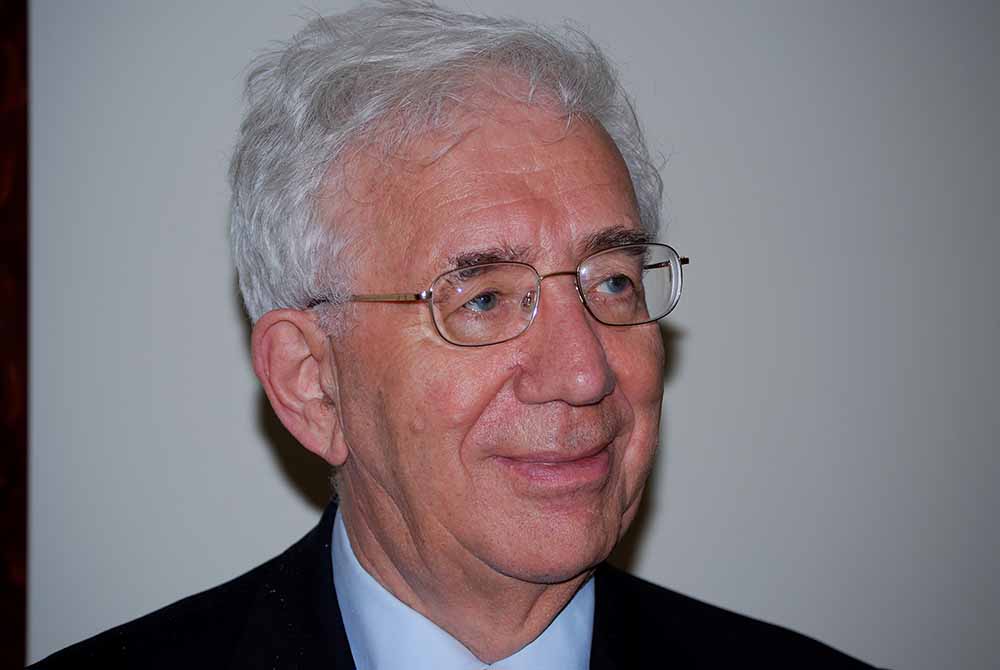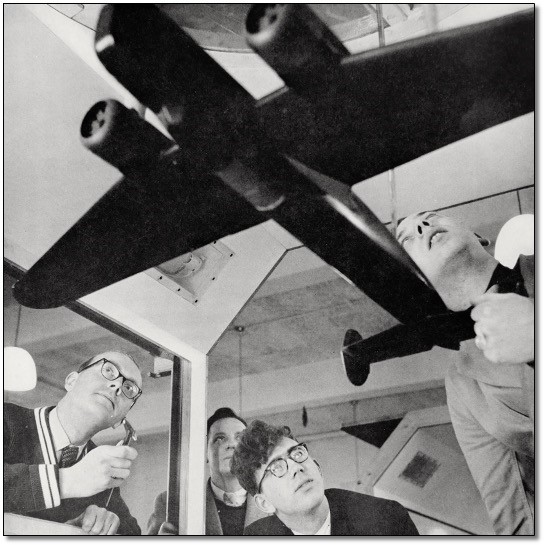Emeritus Professor and former Dean Prof.Dr. Jan van Ingen passed away
On Wednesday 6 December 2023, Emeritus Professor and former Dean of the faculty Prof.Dr. Jan van Ingen passed away at the age of 91. In 1952, Van Ingen was appointed as a student assistant at the then new low-speed tunnel. He considered setting up the research work in this tunnel to be his most important pioneering work. Van Ingen graduated cum laude in Aeronautical Engineering from TH Delft in 1954. In 1965, he also graduated cum laude on his research into boundary layer flows. During the academic year 1966-1967, he stayed at the Lockheed Georgia Research Lab where he was involved in the pioneering phase for the research on computerised graphical support for wing profile design. After returning to Delft, his experience led to a research programme that intertwined fundamental subject knowledge with that of design knowledge. After his sabbatical, Van Ingen was appointed lecturer and, in 1971, professor of aeronautical aerodynamics.
Prof. Van Ingen was Dean of the Faculty of Aerospace Engineering twice. His first period as Dean was from 1972 to 1974. During this period, he led the faculty through a major administrative reform in a turbulent period of leftist student actions. From 1991 to 1997, Van Ingen was Dean again. This was another difficult period because of, among other things, the bankruptcy of Fokker. During that period, the faculty had to pull out all the stops to maintain the number of students. Mostly partly due to Jan van Ingen's efforts, this succeeded. Van Ingen is also the founder of the Design Synthesis Exercise, still the final assignment for Bachelor students of Aerospace Engineering.
In 1995, prof.dr.ir. Jan van Ingen was appointed Knight of the Order of the Lion of the Netherlands. He retired in 1997. Until an old age, Jan van Ingen was very involved with the faculty. He was also an honorary member of the study association VSV Leonardo da Vinci.
We wish the children, grandchildren and relatives of Jan van Ingen much strength with their loss.
On behalf of the Faculty of Aerospace Engineering,
Henri Werij, Dean
Leo Veldhuis, Department Head Flow Physics & Technology
Some memories of Prof Jan van Ingen
Jan was my graduation Professor in 1984. It was the time when aerodynamics research and education at the Faculty of Aerospace Engineering was still divided into three departments; low-speed aerodynamics, high-speed aerodynamics and theoretical aerodynamics, each with its own building or floor. The low-speed aerodynamics building on Leeghwaterstraat was Jan's domain. He was in charge of building a research laboratory (LSL) that enjoys an excellent reputation among researchers in the field.
USA
I have had the pleasure of attending a foreign conference with Jan a number of times. When you travel together, you do get to know each other a little better. One of these conferences was in 1989 organised by the University of Notre Dame in Indiana USA. It was about the aerodynamics of profiles at Low Reynolds numbers. Preeminently the field of study of Jan and Loek Boermans, my supervisor during my studies. At the time, I had been working for the TU Delft Institute for Wind Energy (IvW) for some time. The three of us left for the US and after the conference we travelled by rented car to visit Prof Eli Reshotko, who was working at the University of Cleveland, Ohio in the field of turbulence. Jan was keen to go there to see Reshotko's lab and talk to him about issues that concerned him professionally. Together, we spent quite a few hours in the car anyway, but it's not like Jan was talking all the time. During the trip to Cleveland, I think he had already digested most of what was reviewed at the conference.
Spending money was difficult for Jan. There was no other way, sometimes, and he wasn't really ‘on the penny’, but it shouldn't get too crazy. There is another amusing example of this. On the way back from Cleveland to Detroit airport, we spent the night at a water sports resort on Lake Erie. Jan had the credit card, so he went to the front desk to book rooms. He found out that a 'family discount' could be obtained and whether we objected: Loek and I had to pass for his sons. Whether our passports mattered, I don't remember, but at the counter -to support the family business- I called him 'dad’.
Russia
That Jan was not keen on spending government money when attending a conference was also evident from the following. On a visit to an AGARD conference on wind tunnels in Moscow, just after the fall of the Wall and - as it turned out later - the only one ever held jointly with the Russians, we, a party of about 7 colleagues from NLR, the DNW and TU Delft, ended up in the restaurant on the top floor of Hotel Rossiya, close to the Kremlin and overlooking the river. From the prices on the menu, the Russians had quickly adapted to western prices. Much to Jan's delight, the party decided that a full meal might be too much of a good thing and mere snacks were consumed.
Aerodynamics for 'dummies'
Jan could get very excited when the fruits of research in the low-speed-low-turbulence-tunnel (LTT) became public knowledge. Back then, when the zigzag strips on the suits of the Dutch speed skaters became world news during the Nagano Winter Olympics, he came to 'visit' several times to discuss the latest state of research. Especially because he had been involved in the first measurements, made years before, together with Prof Dobbinga and ir Binkhorst, and yours truly as a student to lend a helping hand. He gave a talk on the subject at the Rotary he was a member of. Of his enthusiasm about his field, the Rotary had plenty to enjoy, witness another talk entitled: Aerodynamics for 'dummies', to which he also liked to count himself, as he said himself, because there was still so much to learn and research.
‘U of je’
Jan did not quickly switch to addressing others informally. He was formal in many cases. It also took quite a long time before I was actually allowed to say Jan. I didn't take that initiative of my own accord. I was given permission for that during a wind energy conference in Copenhagen. Jan, together with the then head of the IoW and my immediate superior, Jan Dragt whom I did get to call Jan, was at the front of a group of us taking a walk. I wanted to know something from Jan Dragt and called out 'Jan', to which both turned around. The three of us therefore laughed and from then on I was also allowed to call Jan van Ingen by his first name.
Proud
Jan was proud of his work. And rightly so. The work on the "e-to-the-n-de" method, which calculates the transition location from laminar to turbulent in a boundary layer still has international acclaim. When it comes to boundary layer over profiles, specially at low Reynolds numbers, Jan is widely regarded as an authority. He has witnessed and spoken with the international leaders in aerodynamics. He worked at a time when analytical research was slowly moving towards numerical methods. But high-quality experimental results always remain valuable as references. Jan contributed to that as well, building an excellent low-speed laboratory. I am pleased that later, in that tradition, as scientific director of the faculty's wind tunnel laboratories, I was able to do my bit to guarantee the quality of Delft's wind tunnel research. And until a very old age, Jan continued to work on computational methods with a truly enviable enthusiasm.
If you got to know Jan a little better, he was not only ‘civilised and reserved’, but also a warm and compassionate person. For instance, all former LSL employees received a message from Jan for their birthdays. He did so faithfully, even when he had long since left Delft. I must honestly confess that I sometimes forgot his birthday. Not last January. But I got no reply, which was unusual. With my birthday this year, there was no message... It turned out not to be a good sign. I keep thinking of Jan van Ingen as an enthusiastic researcher with a great reputation and as an amiable human being.
Nando Timmer, department of Flow Physics and Technology

